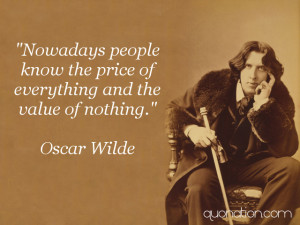What’s High Value?
Published: March 3, 2016
Robert Heinlein said,
“Value has no meaning other than the relationship to living beings. The value of a thing is always relative to a particular person, is completely personal – different in quantity for each living human—market value is a fiction, merely a rough guess at the average of personal values, all of which must be quantitatively different or trade would be impossible.”
The revelation of this quote is value is a highly personal judgement that is shaped by one’s culture, education, experiences, and ideology; what we might define as our personal purchasing genome. The best we can do as business leaders is understand the general framework consumers apply to assessing value, thus making it easier to visualize the personal interpretations that each consumer has regarding value.
In its simplest form, value is as Warren Buffett said, “…what you get.” What you get is shaped by four attributes. The interplay of these four ingredients is assessed differently by each consumer based on their respective purchasing genome. So what are these six ingredients of the value equation?

The first three ingredients are tangible in nature and comprise facility quality (FQ), product quality (PQ) and service quality (SQ). Each of the three aforementioned tangible ingredients, plus the intangible element, or emotional quality (EQ), composes the value framework numerator (see sidebar for description of each ingredient). Each of these numerator ingredients is viewed differently by consumers based on their purchasing genome, and therefore each can exert a different level of influence on the perception of value depending on the individual.
It doesn’t stop here. Before the “real” value of a purchase can be equated by the consumer, they must factor in the two tangible elements of the denominator; price and time. Price and time are viewed both through the lens of the tangible and intangible elements of the numerator and the consumers’ purchasing genome.
Value, whether high or low, is therefore created by a complex relationship among ingredients, which are ultimately framed by the purchasing genome of the individual. Value, however, is not determined solely by price or any other single factor.
The Six Attributes of the Value Equation
FQ – represents attributes such as facility size; type of facilities; cleanliness of facilities; variety of equipment; condition of equipment; lighting and air temperature.
PQ – represents attributes such as variety of group exercise classes; quality of group exercise classes; existence of kids programs; quality of personal training services and amenities offered.
SQ – represents how well you engage the client/member and may include things such as name recognition; warm welcomes and fond farewells; level of attention given members; service recovery process and staff relationship skills.
EQ – represents the emotional engagement of the customer such as do they feel cared for and appreciated; their relationships with other members; their relationships with staff; whether their self-confidence or self-esteem has benefited and pride in belonging.
Time – represents how much time they perceive, as well as actually spend leveraging their experience.
Price – represents the hard cash cost of engagement.
Tags: The Value Equation
